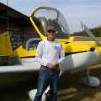Antenna mounted inside fiberglass belly panel
-
Members Online
- donkaye
- 802flyer
- DCarlton
- richardbrochu27
- will1874
- 1980Mooney
- 201Steve
- Planegary
- Crawfish
- bradp
- Schllc
- ed
- Eight8Victor
- FLYFST
- 00-Negative
- alextstone
- DXB
- N201MKTurbo
- TCC
- Brad B
- WestTX20J
- N305EP
- Derrickearly
- Pierre07
- gdwinc
- cbarry
- bcg
- rickseeman
- Shiroyuki
- 67 m20F chump
- hphillips
- TMass
- RampMan
- Rick Junkin
- dzeleski
- Peter T
- Utah20Gflyer
- Hank
- Austintatious
- bhtitle
- Captainhog
- Marc_B
- Joe Linnebur
- Rmfriday
- 231MJ
- Shadrach
- wombat
- laytonl
- Aerospace


Recommended Posts
Join the conversation
You can post now and register later. If you have an account, sign in now to post with your account.